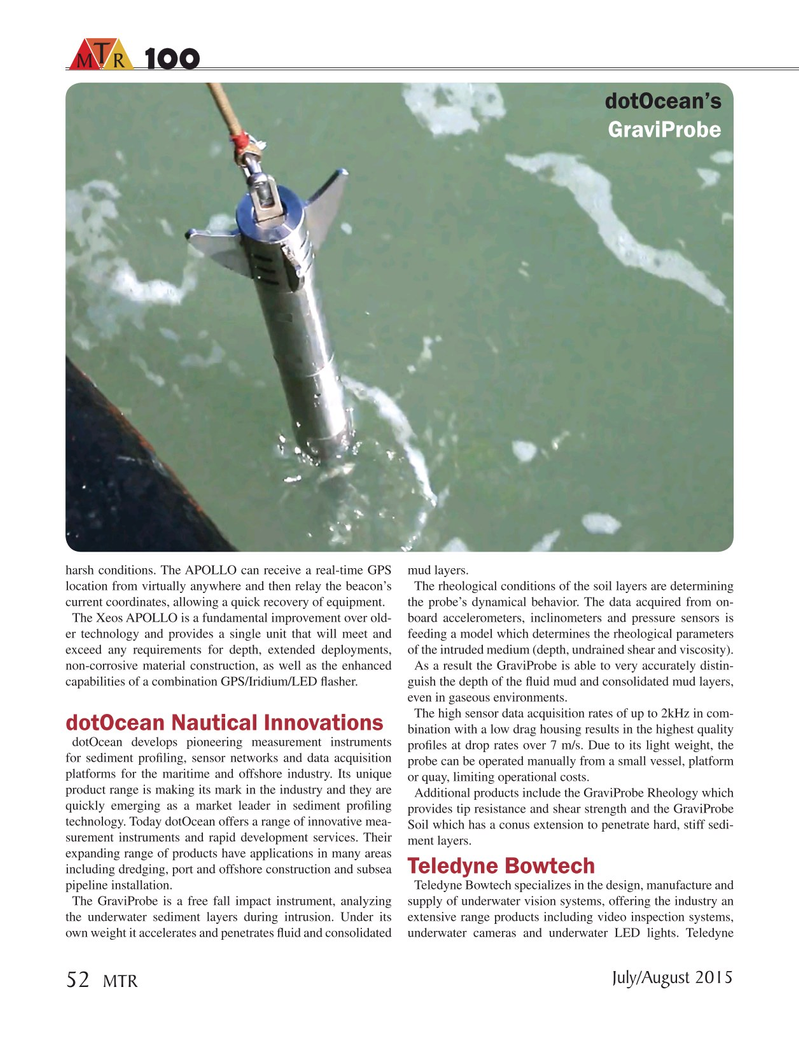
Page 52: of Marine Technology Magazine (July 2015)
Read this page in Pdf, Flash or Html5 edition of July 2015 Marine Technology Magazine
T
M R 100100 dotOcean’s
GraviProbe harsh conditions. The APOLLO can receive a real-time GPS mud layers.
location from virtually anywhere and then relay the beacon’s The rheological conditions of the soil layers are determining current coordinates, allowing a quick recovery of equipment. the probe’s dynamical behavior. The data acquired from on-
The Xeos APOLLO is a fundamental improvement over old- board accelerometers, inclinometers and pressure sensors is er technology and provides a single unit that will meet and feeding a model which determines the rheological parameters exceed any requirements for depth, extended deployments, of the intruded medium (depth, undrained shear and viscosity).
non-corrosive material construction, as well as the enhanced As a result the GraviProbe is able to very accurately distin- capabilities of a combination GPS/Iridium/LED

 51
51

 53
53
